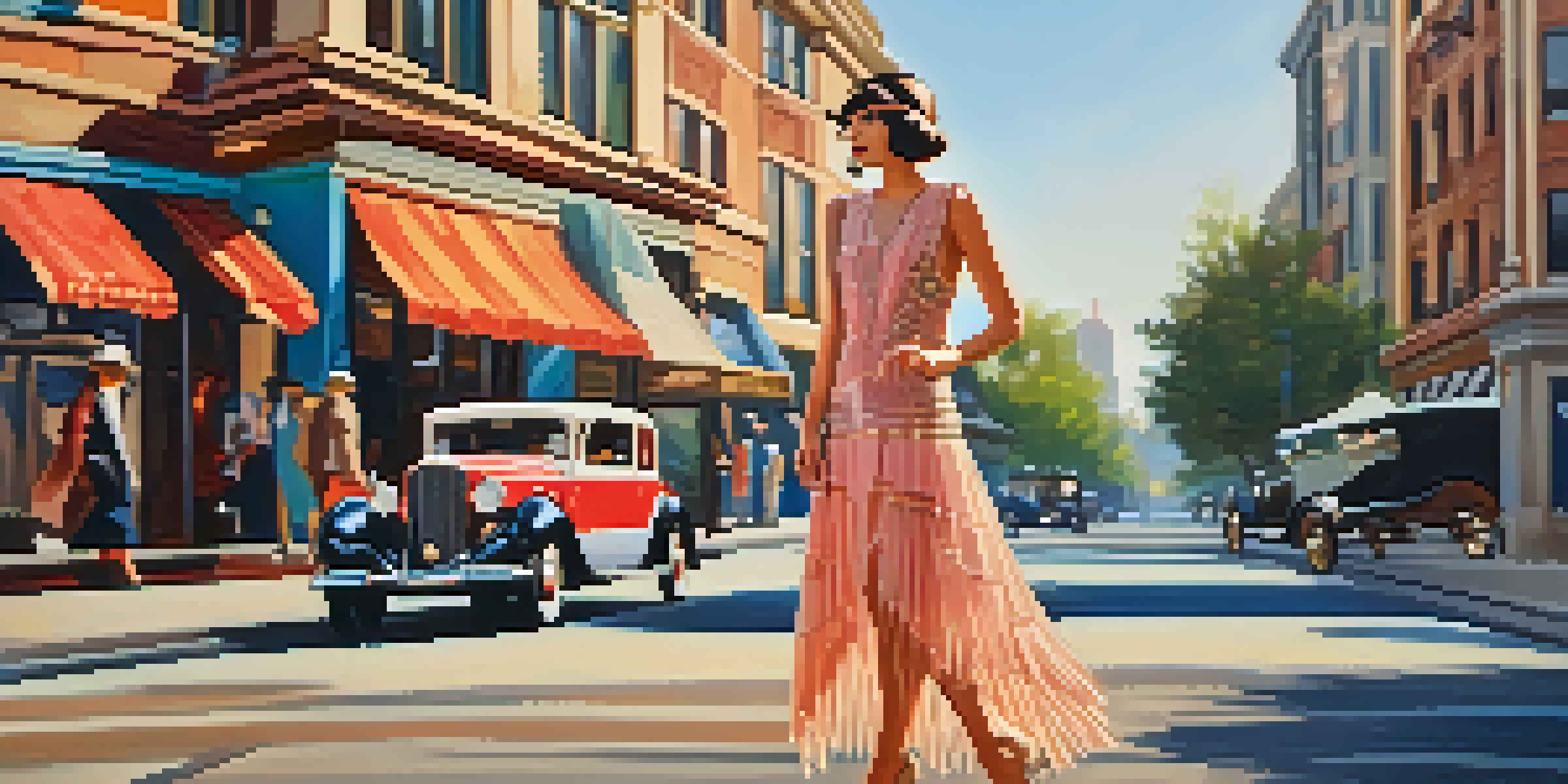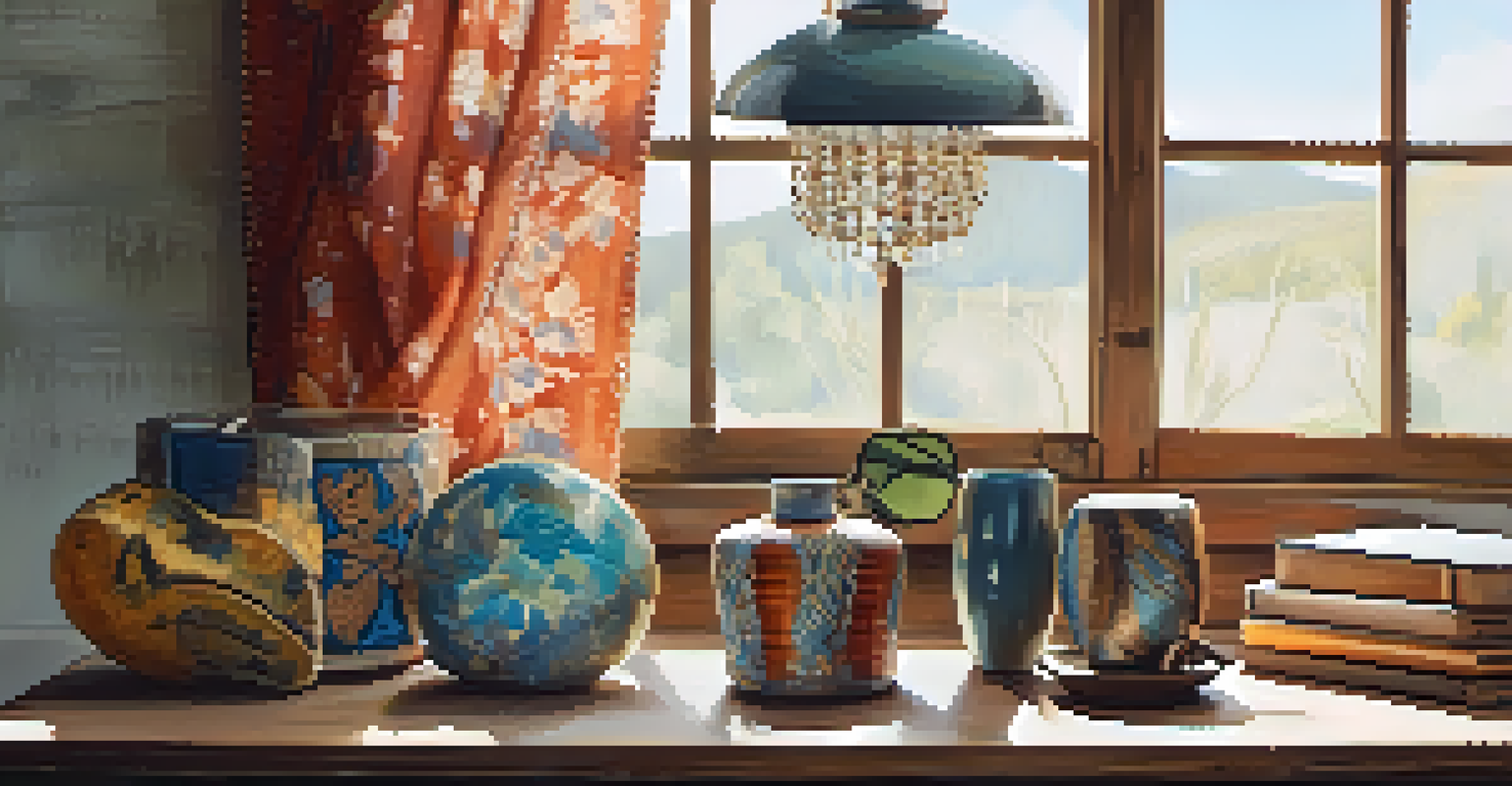The Power of Collaboration in Reviving Vintage Fashion Trends

Understanding the Allure of Vintage Fashion Trends
Vintage fashion holds a unique charm that attracts enthusiasts and collectors alike. From the elegant lines of 1920s flapper dresses to the bold patterns of 1970s bohemian styles, each era has its own story to tell. The nostalgia associated with vintage pieces often evokes memories and emotions, making them desirable in today’s fast-paced fashion world.
Fashion is the armor to survive the reality of everyday life.
As consumers increasingly seek individuality, vintage fashion provides a refreshing alternative to mass-produced clothing. By mixing old and new, fashionistas can create unique outfits that stand out. This desire for authenticity drives the revival of vintage trends, making collaboration an essential element in bringing these styles back to life.
Moreover, the sustainability movement has added to the allure of vintage fashion. By opting for second-hand pieces, consumers are not only embracing unique styles but also making eco-friendly choices. This shift in mindset opens the door for collaborations that focus on sustainable practices while celebrating vintage aesthetics.
The Role of Designers in Vintage Trend Revival
Designers play a pivotal role in reviving vintage trends by reinterpreting classic styles for modern audiences. By incorporating vintage elements into their collections, designers can attract a diverse clientele drawn to both nostalgia and contemporary flair. This synergy allows for the timelessness of vintage fashion to shine through in new and exciting ways.

For instance, many contemporary designers draw inspiration from the silhouettes and patterns of past decades, blending them with modern fabrics and techniques. This fusion not only preserves the essence of vintage styles but also keeps them relevant in today’s fashion landscape. Such collaborations can lead to innovative pieces that resonate with a wide range of fashion lovers.
Vintage Fashion's Unique Appeal
The charm of vintage fashion lies in its nostalgia and individuality, offering a sustainable alternative to mass-produced clothing.
Additionally, up-and-coming designers often collaborate with vintage shops or brands to create capsule collections that highlight specific eras. These partnerships allow for a deeper exploration of fashion history while making it accessible to a new generation. The result is a refreshing take on vintage that sparks interest and conversation among fashion enthusiasts.
Influencers and Their Impact on Vintage Fashion Trends
Influencers have become key players in the revival of vintage fashion trends, using their platforms to showcase their unique styles. By sharing their vintage finds and how they style them, influencers inspire their followers to explore thrift stores and vintage shops. This grassroots movement encourages a wider appreciation for vintage fashion, making it more mainstream.
Vintage clothing is like a time capsule; each piece has a story to tell.
Moreover, collaborations between influencers and vintage brands can create buzz and excitement around specific pieces or collections. When a popular influencer shares their take on a vintage item, it often leads to increased demand and interest in that style. This dynamic relationship between influencers and vintage fashion drives trends and revives interest in previously overlooked pieces.
Additionally, influencers often introduce their audiences to the stories behind vintage items, making them more than just clothing. By sharing the history and craftsmanship involved, they cultivate a deeper connection between consumers and the pieces they choose to wear. This narrative aspect enhances the allure of vintage fashion and encourages more people to embrace it.
Community Initiatives Supporting Vintage Fashion
Community initiatives play a significant role in promoting and reviving vintage fashion trends. Thrift markets, vintage fairs, and pop-up shops create opportunities for local designers and vintage sellers to showcase their wares. These events not only highlight the charm of vintage fashion but also foster a sense of community among enthusiasts.
Moreover, workshops and seminars focused on vintage styling and upcycling attract individuals eager to learn more about sustainable practices. By educating the community about the value of vintage fashion, these initiatives help create a culture of appreciation for unique styles. This collective effort encourages more people to participate in the vintage fashion revival.
Designers Revive Vintage Trends
Contemporary designers are reinvigorating vintage styles by blending classic elements with modern techniques, making them appealing to today's audience.
Social media also plays a crucial role in building these communities, as platforms allow individuals to share their vintage finds and styling tips. Hashtags like #VintageFashion and #ThriftedStyle unite people from different backgrounds, all passionate about vintage aesthetics. This sense of belonging fuels the revival of vintage trends and encourages collaboration among diverse fashion lovers.
The Impact of Sustainability on Vintage Fashion
Sustainability is a driving force behind the resurgence of vintage fashion trends, as consumers become more conscious of their purchasing habits. The idea of reusing and repurposing clothing resonates with those looking to minimize their environmental impact. Vintage fashion aligns perfectly with this mindset, offering an eco-friendly alternative to fast fashion.
Collaborations between vintage retailers and sustainable brands further emphasize the importance of eco-consciousness in the fashion industry. By promoting second-hand shopping and upcycling, these partnerships highlight the benefits of choosing vintage over new. This not only supports local businesses but also contributes to a more sustainable future for fashion.
Additionally, the storytelling aspect of vintage fashion adds to its appeal. Each piece carries a history, and wearing it becomes a form of expression that connects individuals to the past. This narrative encourages consumers to consider the lifecycle of their clothing and the positive impact of choosing vintage, making sustainability an integral part of the vintage fashion revival.
Fashion Shows and Collaborative Projects
Fashion shows featuring vintage-inspired collections have become increasingly popular, showcasing the beauty of past trends in a contemporary light. These events often involve collaborations between established designers and vintage boutiques, creating a unique blend of styles. By highlighting the versatility of vintage fashion, these shows inspire attendees to explore and embrace these timeless trends.
Furthermore, collaborative projects between fashion schools and vintage shops provide students with hands-on experience in working with vintage clothing. Students learn the intricacies of styling, garment care, and the history behind vintage pieces. This practical knowledge fosters a deeper appreciation for vintage fashion and encourages the next generation of designers to incorporate these elements into their work.
Influencers Drive Vintage Popularity
Influencers play a significant role in popularizing vintage fashion by showcasing unique styles and connecting audiences to the stories behind each piece.
The excitement generated by these projects and shows not only engages fashion insiders but also captivates the general public. As more people witness the revival of vintage fashion on the runway, they become curious and inspired to incorporate these styles into their own wardrobes. This ripple effect amplifies the impact of collaboration in reviving vintage trends.
Navigating the Future of Vintage Fashion Collaboration
As the vintage fashion revival continues to gain momentum, collaboration will remain a crucial element in shaping its future. Designers, influencers, and communities must work together to keep the spirit of vintage alive while adapting to current trends. This collective approach ensures that vintage fashion remains relevant and appealing to new audiences.
Innovations in technology, such as augmented reality and virtual fitting rooms, also offer exciting opportunities for the vintage fashion industry. By integrating these advancements, brands can enhance the shopping experience and make vintage fashion more accessible. Collaborations that leverage technology will likely attract a tech-savvy generation eager to explore vintage styles.

Ultimately, the future of vintage fashion collaboration is bright, as it thrives on creativity, sustainability, and community. By embracing the power of collaboration, we can continue to celebrate the beauty of vintage fashion and inspire future generations to appreciate its rich history and timeless appeal.